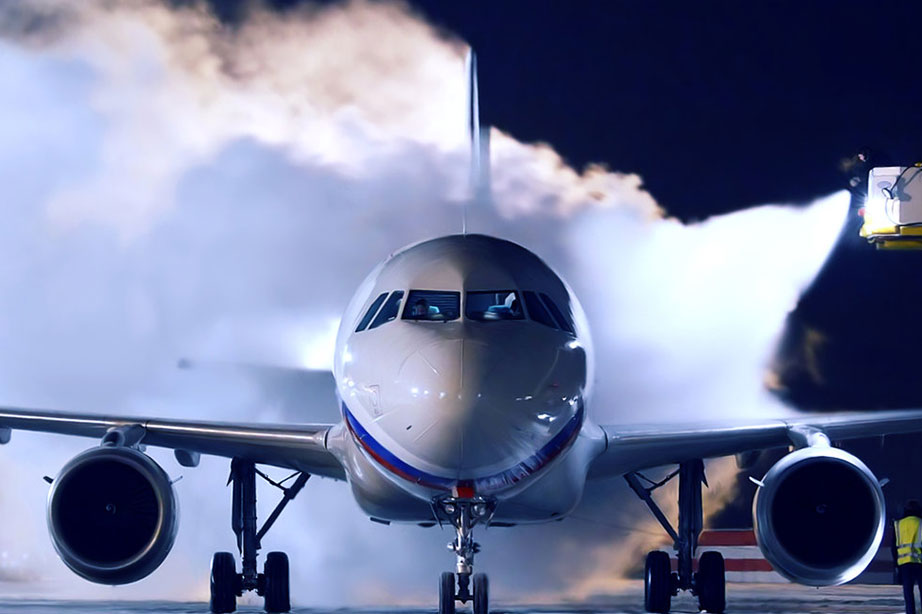What is de-icing?
Autumn is in full effect and before we know it, the winter season is upon us. The temperature is decreasing rapidly and we have to prepare ourselves for icy and slippery roads. It is a known fact that traffic is affected largely by weather conditions. You may think that airplanes are used to dealing with cold temperatures, but even airplanes and especially airports need to deal with the hazards of ice, snow, storm and hail.

The process of de-icing
When airplanes suffer the consequences of cold temperatures on the ground and ice on the wings, de-icing is a measure to keep flights operating. Ice on the wings of the airplane is dangerous for flying because the flaps and other mechanic parts can freeze and become uncontrollable. Therefor de-icing fluids are used and sprayed onto the airplane by large machines.
De-ice type 1
There are four types of de-icing methods and fluids. Type I is typically used to de-ice in general. It protects against the generation of ice for a short amount of time and is used when the temperatures are not extremely low but the wings do need to be cleared of overnight frost for example. The de-ice fluid is heated to a temperature of 80 degrees and sprayed onto the wings of the plane.
Anti-ice type 2,3 and 4
The other types of de-icing are actually anti-ice methods. They prevent ice from attaching to the plane for a longer period of time. Type 2 for example attaches to the plane until it reaches a speed of 100 knots. Type 3 is used for smaller and slower airplanes and therefor is a little thinner than type 2. Type 4 is most often used for frequent flight routes and gives planes a longer window of anti-ice before takeoff. The plane can hold on the runway for a longer period of time before taking off, essential in tight flight planning situations such as the case at Heathrow Airport.
The nice price of de-ice
De-icing is a very costly affair for the airline. For ground-handlers however, it is a time to make money. The price of de-icing fluids is more expensive than fuel. De-icing a large plane such as an A330 Airbus can cost up to €8.000(!).
Flight delayed due to de-icing
If your flight is delayed because of the de-icing process for more than three hours you are entitled to compensation. The airline is responsible for de-icing in time. If you miss your connection because of a delay on your first flight due to de-icing you are also entitled to compensation.
Have you ever experienced de-icing on your flight?


